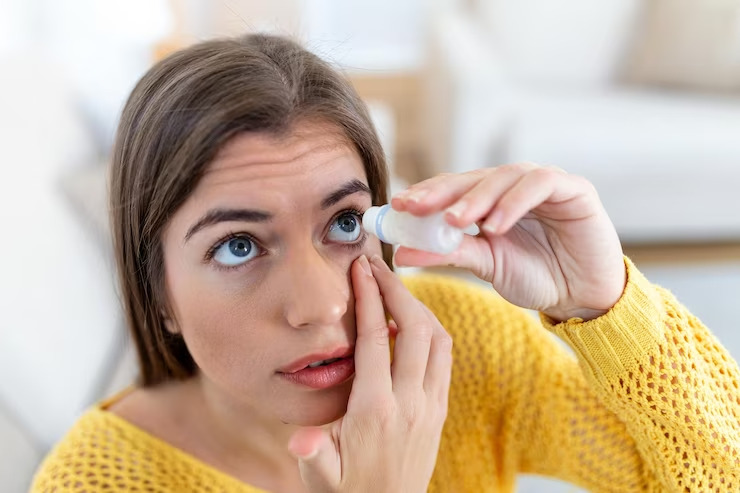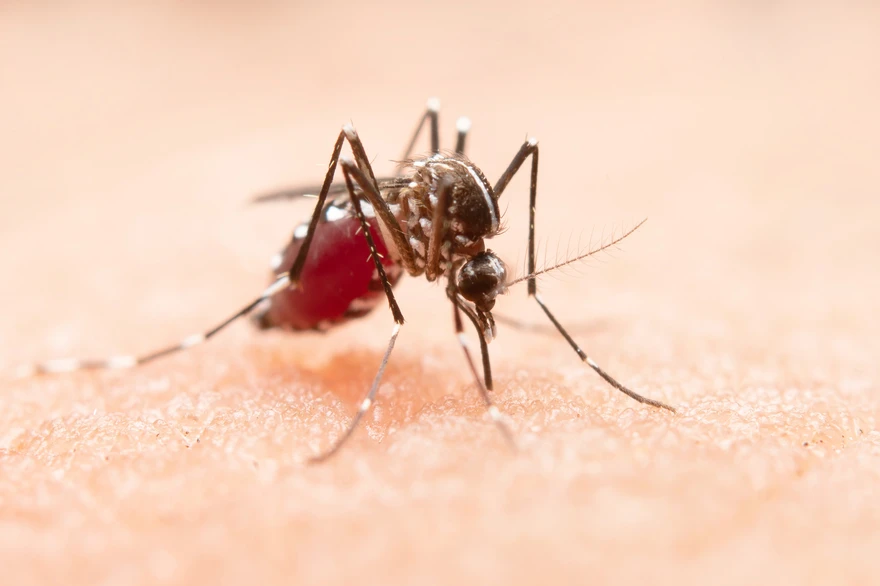Preventive Healthcare
Conjunctivitis: Symptoms, Causes, Types And Treatment
4001 Views
0

Conjunctivitis (conjunctivitis) is inflammation or infection of the clear membrane (conjunctiva) that lines the eyelids and covers the white part of the eyeball. When the small blood vessels of the conjunctiva become inflamed, they become more noticeable. This makes the whites of the eyes appear reddish or pink.
Conjunctivitis can be caused by a variety of factors, including bacterial or viral infections, allergies, or a nonspecific condition (eg, a foreign body in the eye). A red eye is caused by all types of conjunctivitis, but not everyone who has a red eye has conjunctivitis.
Conjunctivitis Signs and Symptoms
In Conjunctivitis Person may experience the below-listed symptoms.
- Red eye: Unilateral, bilateral, or bilateral after the other
- Classically purulent, however, it could also be a thin, thick, mucopurulent, or watery discharge.
- Pain, stinging, burning, and discomfort
- Tearing
- increased sensitivity to light
- allergy to contact lenses
- reduced or fluctuating eyesight
Causes of Conjunctivitis:
Conjunctivitis is most commonly caused due to
- virus
- bacterias
- Allergens
Other Causes May Include
- Irritant chemicals
- Contact lense
- insertion of foreign objects in the eyes (such as eyelashes)
- Air pollutants namely smoke, dust, fumes, chemical vapors, etc.
- fungi
- Parasites
Conjunctivitis can be difficult to diagnose because some symptoms are similar regardless of the cause.
Types of Conjunctivitis
1) Viral Conjunctivitis
- A virus that can also cause the common cold commonly causes viral conjunctivitis.
- A variety of viruses, including adenoviruses, can cause viral conjunctivitis.
- Viral conjunctivitis is extremely contagious.
2) Bacterial Conjunctivitis
- Bacterial conjunctivitis is extremely contagious, frequently affecting multiple family members or children in a classroom.
- Bacterial conjunctivitis is transmitted through contact, most commonly with objects that have come into contact with the infected person's eye secretions.
- Most common bacterias include Streptococcus pneumoniae, Staphylococcus aureus, Haemophilus influenzae, Moraxella catarrhalis, or, it is also caused by, Chlamydia trachomatis and Neisseria gonorrhoeae (less commonly)
3) Allergic Conjunctivitis
- Allergic conjunctivitis is an inflammation of the conjunctiva.
- Allergens and irritants including pollen, dust, and mold can cause allergic conjunctivitis.
- There are two types of allergic conjunctivitis:
- Seasonal allergic conjunctivitis: This condition is linked to seasonal allergies, which typically manifest themselves in the spring and summer and occasionally in the fall. Seasonal allergic conjunctivitis is a condition brought on by exposure to pollen, grass, and other airborne allergens.
- Perennial allergic conjunctivitis: This condition lasts the entire year and is typically brought on by indoor allergens such as dust mites, pet dander, and mold spores.
- Seasonal allergic conjunctivitis: This condition is linked to seasonal allergies, which typically manifest themselves in the spring and summer and occasionally in the fall. Seasonal allergic conjunctivitis is a condition brought on by exposure to pollen, grass, and other airborne allergens.
- It is Non-Contagious
Prevention of Conjunctivitis
Whenever you are suffering from conjunctivitis, you may prevent it from spreading to others by doing the following:
- Wash your hands frequently for 20 seconds with soap and warm water.
- Wash them thoroughly before and after cleaning your infected eye or apply eye drops or eye ointment to it.
- Avoid rubbing or touching your eyes. This could aggravate the situation or spread it to your second eye.
- Use different eye drop bottles or dispensers for your diseased and healthy eyes.
- Stop using contact lenses unless your ophthalmologist says it's safe to do so again.
- Personal items such as washcloths, pillows, towels, makeup brushes, eye drops, eye or face makeup, contact lenses, contact lens storage cases, or eyeglasses should never be shared.
- Avoid using Swimming pools
If you are in the presence of someone who has conjunctivitis, by taking the following actions, you can lower your chance of contracting an infection if you are around someone who has conjunctivitis:
- Wash and clean your hands frequently in warm water and soap for at least 20 seconds.
- If soap and warm water are not available, wash and clean your hands with sanitizer that contains at least 60% alcohol.
- After touching an infected person or the things he or she uses, wash and clean your hands.
- Avoid using unwashed hands to touch your eyes.
- Personal items such as washcloths, pillows, towels, eye drops, makeup brushes, eye or face makeup, contact lenses, contact lens storage cases, or eyeglasses should never be shared.
Treatment of Conjunctivitis
Conjunctivitis treatment is typically aimed at symptom relief. Your ophthalmologist may advise you to use artificial tears, clean your eyelids with a damp cloth, and apply cold or warm compresses several times per day. In Serious cases, the treatment you receive will be decided by the cause of your conjunctivitis.
Viral Conjunctivitis
- The majority of cases of viral conjunctivitis may cause minor symptoms.
- Without treatment, the infection usually gets cleared in 7 to 14 days with no long-term complications.
- However, viral conjunctivitis can take 2 to 3 weeks or longer to gets clear up in some cases.
- For treating more severe conjunctivitis conditions, a doctor may recommend antiviral medicine. for instance, conjunctivitis due to the varicella-zoster or herpes simplex virus.
Bacterial Conjunctivitis
- Mild conjunctivitis which is caused by bacteria can be improved without antibiotics even without causing complications.
- It usually gets improved in 2 to 5 days without treatment but can take up to 15 days to completely disappear.
- For bacterial conjunctivitis, your ophthalmologist may prescribe an antibiotic, which is usually administered as an eye drop or eye ointment topically.
- Antibacterial agents may be required in the situations:
- When conjunctivitis occurs in people who compromised or weak immune systems.
- It is associated with discharge (pus).
- When the presence of certain bacteria is suspected
Allergic Conjunctivitis
- Caused due to allergens that usually improve when the allergen is removed from the environment where the patient lives.
- Anti-allergic medications and specific eye drops (antihistamines), including some prescription eye ointments or drops, can also alleviate this type of conjunctivitis.
Don't Get Sick Again
Additionally, there are precautions you may take when you are suffering from conjunctivitis to prevent reinfection after the infection clears up:
- Any eye, face, or cosmetic you used while sick should be thrown away and replaced.
- If you wear contact lenses or cases during your eyes were infected, throw them away.
- If you used contact lens solutions during your eyes were infected, throw them away.
- Eyeglasses and cases you used during infection should be cleaned.























 WhatsApp
WhatsApp